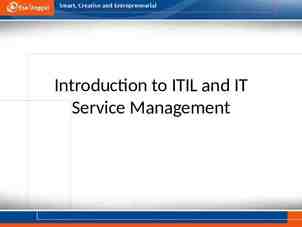NATIONAL PATIENT SAFETY GOALS – 2018 Tohono O’odham Nation Heath
27 Slides1.13 MB
NATIONAL PATIENT SAFETY GOALS – 2018 Tohono O’odham Nation Heath Care Updated 2.16.18 mp
GOAL 1: IMPROVE THE ACCURACY OF PATIENT IDENTIFICATION
G1A – Use at least two patient identifiers when providing care, treatment or services Patient Name Date of Birth G OAL 1A: USE OF TWO PATIENT IDENTIFIERS NPSG 01.01.01
G1B: Improve the Accuracy of Patient Identification Before initiating a blood or blood component transfusion: Match the blood or blood component to the order. Match the patient to the blood or blood component. Always use the two-person varication process. G1B: ELIMINATING TRANSFUSION ERRORS NPSG .1.03.01
Develop written procedures. Implement the procedures for managing results. Evaluation the timeliness of reporting results. GOAL 2: IMPROVE THE EFFECTIVENESS OF COMMUNICATION AMONG CAREGIVERS
GOAL 3: IMPROVE THE SAFETY OF USING MEDICATIONS
GOAL 3: IMPROVE THE SAFETY OF USING MEDICATIONS:
Label all medications, medication containers (for example syringes, medicine cups, basins), or other solution on and off of the sterile field. (NPSG 03.04.01) What is wrong with this picture GOAL 3D: LABEL ALL MEDICATIONS, MEDICATION CONTAINERS OR OTHER SOLUTIONS ON AND OFF THE STERILE FIELD.
GOAL 3E: REDUCE THE LIKELIHOOD OF PATIENT HARM ASSOCIATED WITH THE USE OF ANTICOAGULATION THERAPY
Brown Cap – 10,000 units Orange Cap – 5000 units Blue Cap – Heparin Flush Intravenous – Lab Scale, Lab HEPARIN DOSES
A process for comparing the patient’s current medication(s) GOAL 3F: MEDICATION RECONCILIATION
A complete list of the patient’s medications is communicated and provided to the patient on discharge from the facility
GOAL 6: REDUCE HARM ASSOCIATED WITH CLINICAL ALARMS
Leaders establish alarm system safety as a hospital priority. Identify the most important alarms signals to manage. Establish policies and procedures. Educate staff. G6A: IMPROVE THE SAFETY OF CLINICAL ALARM SYSTEMS
GOAL 7: REDUCE THE RISK OF HEALTH CARE –ASSOCIATED INFECTIONS
Goal 7A: Comply with WHO or CDC hand hygiene guidelines (NPSG 07.01.01)
Goal 7C: Reduce the risk of Health Care Associated Infections. MDROs (NPSG 07.03.01) Central venous catheters (NPSG 07.04.01) Surgical site infections (NPSG 07.05.01)
Goal 7: Implement evidence based practices to prevent HAI infections due to MDROs. Risk assessment Educate staff Educate patients Surveillance Measure and monitor Report data Implement p/p ID process in lab for alerts on new Dx Implement alert system with transfers NPSG 07.03.01
Implement evidence based practice to prevent central line-associated bloodstream infections. Educate P/P Implement process Standardize supplies Standardize protocols Evaluate and report NPSG 07.04.01
Implement evidence based practices for preventing surgical site infections. Educate staff and patients Implement p/p Surveillance Report outcomes Administer appropriate antimicrobial agents Safe hair removal NPSG 07.05.01
This NPSG is not applicable to pediatric populations. Research resulting in evidence-based practices was conducted with adults, and there is no consensus that these practices apply to children. 7F: PREVENTING CATHETER-ASSOCIATE URINARY TRACT INFECTIONS
The organization identifies patients at risk for suicide TONHC Emergency Department – screens and has protocol for patients that are at risk. GOAL 15: THE ORGANIZATION IDENTIFIES SAFETY RISKS INHERENT IN ITS PATIENT POPULATION.
IDENTIFY INDIVIDUALS AT RISK FOR SUICIDE NPSG.15.01.01
Universal protocol for preventing wrong site, wrong procedure, and wrong person surgery. Conducting a pre-procedure verification process Identify items that need to be made available Label diagnostic and radiology test results, eg. Radiology images, pathology and biopsy reports Any required blood products, implants, devices and/or special equipment for the procedure, even code carts. UP.01.01.01
Marking the Procedure Site Identify those procedures that require marking of incision or insertion site Mark before the procedure is performed if possible with patient involved Mark by a LIP Method for marking is consistent throughout the hospital Written alternative is in place when patent refuses site marking or when anatomically impossible UP.01.02.01
A time-out is performed before the procedure. Conducted immediately before starting the invasive procedure or making the incision Has the following characteristics Standardized as defined by the hospital Initiated by the designated member of the team Involves immediate members of the procedure team During the time-out, team members agree with correct patient, correct site and the procedure to be done Documentation of the completion of the time-out UP.01.03.01
Shared Folder: \\tucsel-vm-fsg\groupdata\Quality Management THANK YOU
































